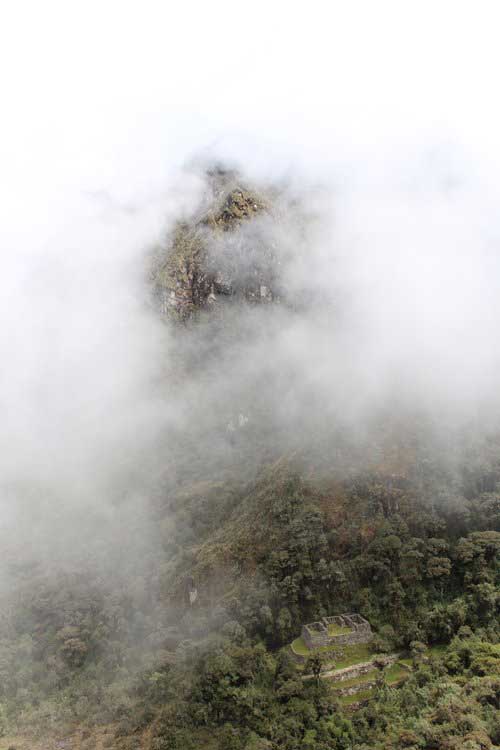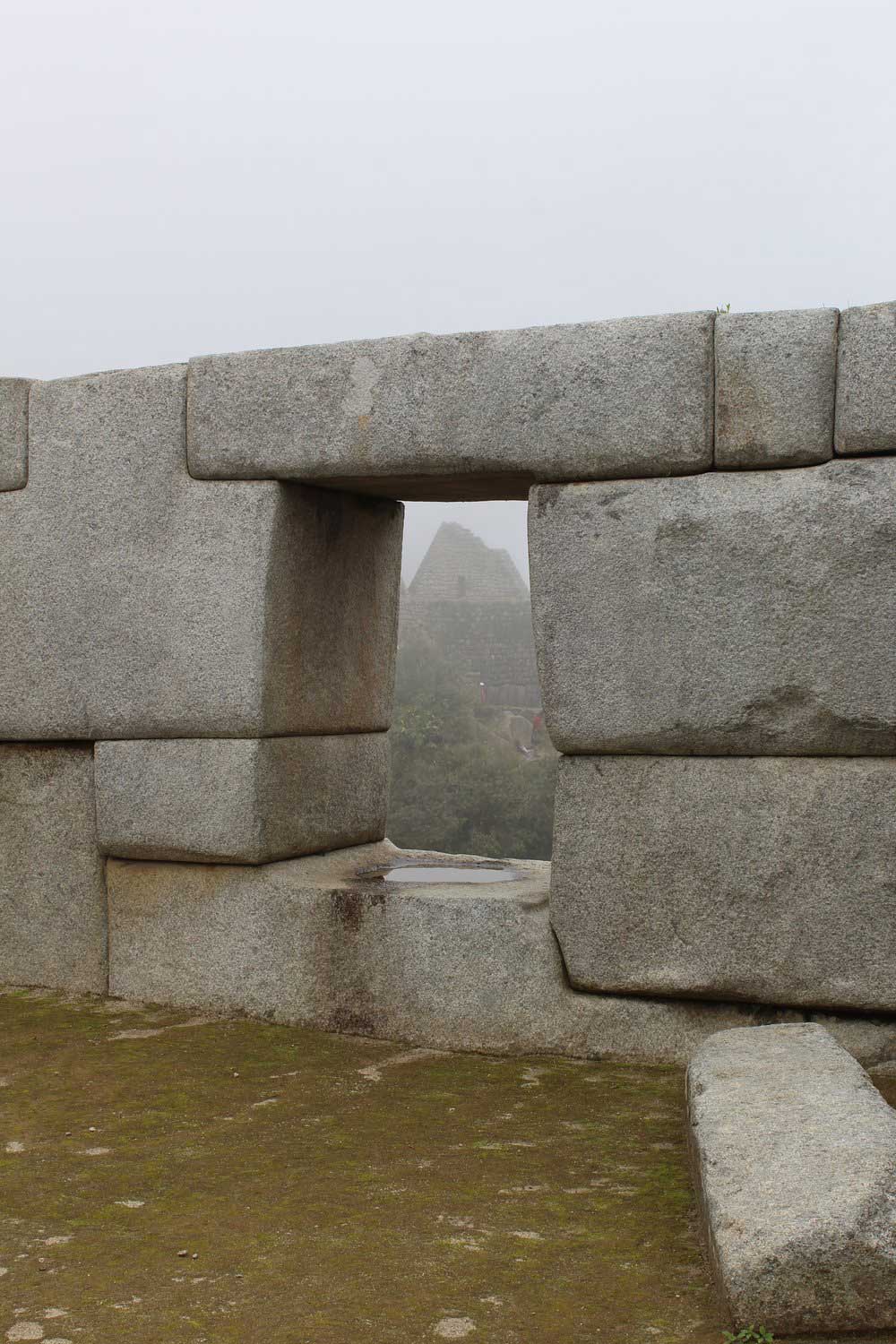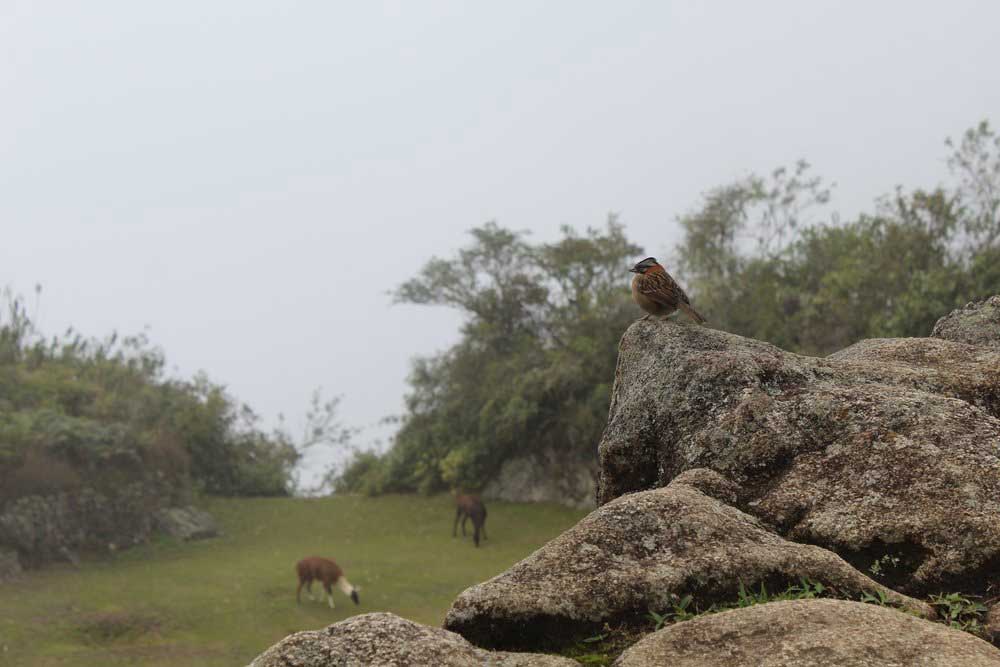Entry No. 32 // 08.03.17
The Bellybutton of the World
On one of the team’s latest expeditions to Peru, we trekked the Inca Trail to Machu Picchu to study the particular frequencies associated with the Sacral Energy of the planet. Located at 13.1631° S, 72.5450° W, this area is known for its connection to creative energy, emotional connection, and flexibility. In Quecha (the native tongue of Peru), Cusco translates to “the bellybutton of the world”. Coincidentally, the Sacral Energy of the body happens to resonate at the bellybutton.


A 2 hour bus ride through the lush mountainside of Peru, brought us to our first checkpoint. After a flash of the proper documentation, we were off on our 4 day hike to Machu Picchu. The trail was an intense series of stone steps either going up, or going down. But, each step brought us closer to connecting with the ancient ruins behind the mists.
Due to the thin air in this region, hiking is more challenging than one might first imagine. At the highest elevation of the trail at 13,830 ft., catching one’s breath takes a little more time than usual. Meanwhile, the locals that are hired as porters, run the trail in sandals while chewing coca leaves.
Coca plants grow in abundance along the trail, and ease elevation sickness. Another lovely example of how the earth provides natural medicine when needed. Like how aloe grows in desert-climates.

Along the trail, we encountered multiple Inca ruins that point to both the military prowess and spirituality of the Inca. They used the geography of the landscape to build fortresses that were so well hidden that they weren’t known to the world until 1911. Even during Spanish Colonization in the 16th century, the Conquistadors did not find Machu Picchu. Thus, most of the ancient fortress remains intact.
On the 4th day of our trek, we woke up at 4am to get to the last checkpoint of the trail before the crowds. Then, nearly ran the last bit of the trail in anticipation. At long last, the trail opened up to the iconic Machu Picchu fortress. The mists slowly pealed away to unveil this multi-tiered landscape speckled with roofless stone buildings.

We made our way up to the heart of ruins to see the more technically advanced stonework. Each piece of stone in the wall is perfectly carved to fit with the network. The fit is so tight that even a piece of paper cannot fit between.
 The Inca were amazing craftsmen. Perhaps this skill-set came from the necessity to build structures that would hold up against the seismic activity as a result of being located near one of the 11 major fault lines of the world. The Atacama Trench (or Peru-Chile Trench), is an oceanic fault line that stretches along the Peruvian coast, in the Pacific Ocean. Even today, the major cities on the coast, such as Lima, are built higher up in elevation from the beach in case of a tsunami.
The Inca were amazing craftsmen. Perhaps this skill-set came from the necessity to build structures that would hold up against the seismic activity as a result of being located near one of the 11 major fault lines of the world. The Atacama Trench (or Peru-Chile Trench), is an oceanic fault line that stretches along the Peruvian coast, in the Pacific Ocean. Even today, the major cities on the coast, such as Lima, are built higher up in elevation from the beach in case of a tsunami.
The Inca were amazing craftsmen. Perhaps this skill-set came from the necessity to build structures that would hold up against the seismic activity as a result of being located near one of the 11 major fault lines of the world. The Atacama Trench (or Peru-Chile Trench), is an oceanic fault line that stretches along the Peruvian coast, in the Pacific Ocean. Even today, the major cities on the coast, such as Lima, are built higher up in elevation from the beach in case of a tsunami.

This interlaced structure has lasted for hundreds of years and has persevered through seismic activity and colonization. The Inca knew what they were doing.
There are a few theories of what this structure was built for, but the strongest theory is that Machu Picchu was an estate for the Inca Emperor.
All evidence points to the fact that the Inca had an innate understanding of the planet and were tapped into the Sacral Energy that resonates at this location; From the way they farmed using a complex terraced system to irrigate the plants, and their impeccably crafted structures.

The team stayed for a bit in Machu Picchu and took readings of the energy frequencies of the area. No pictures of the team were shared here, out of respect for the privacy of the Investigators. But note that the data collected at this location is being used to further the research for ATI.
Stay tuned for a post about our expedition to Lake Titicaca to explore the Peruvian origin story, and how it relates to the Sea People.